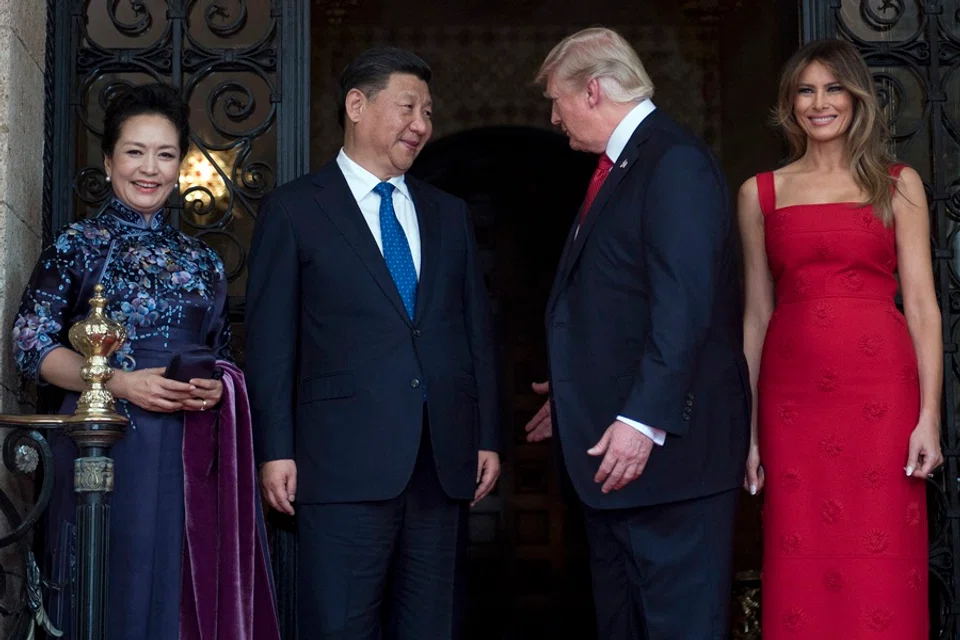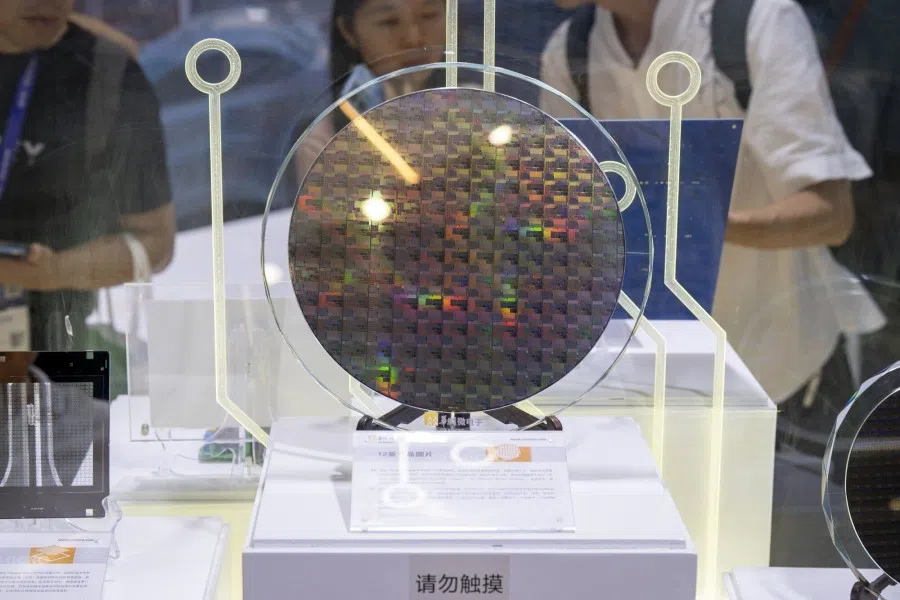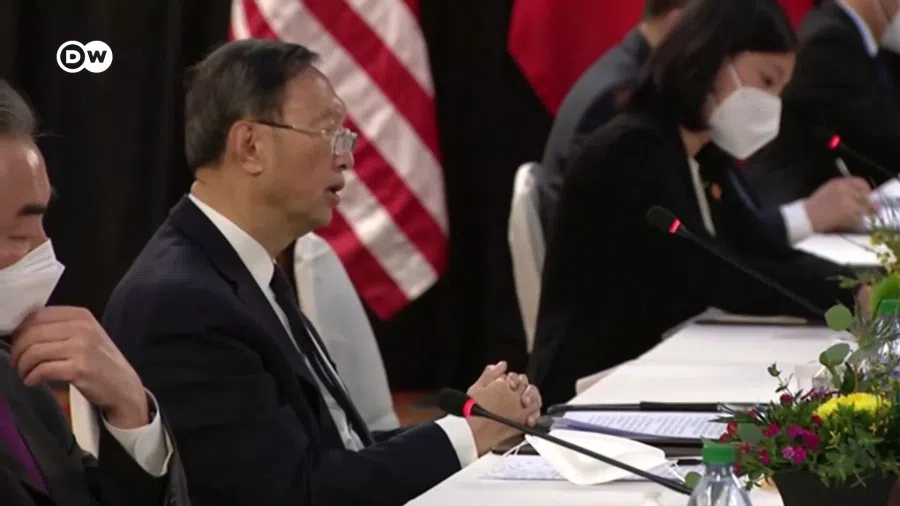From chips to cooking oil: Who plays the final card in US–China rivalry?
As much as they want to, China and the US cannot fully decouple from each other, and their tit-for-tat response to sanctions and export controls have put each other in a chokehold. Lianhe Zaobao correspondent Sim Tze Wei notes that China is only taking a page from the US’s playbook.

From high-end chips to soybeans and the “not-so-rare” rare earths, the US-China trade war has seen it all. Now, the latest — and perhaps most unexpected — battleground is cooking oil. Specifically, used cooking oil, or what’s known in China as “gutter oil”, has become the newest card played in this ongoing economic showdown.
China and US’s love-hate relationship
This “smokeless war” has gone beyond tariffs, extending from the land to the sea and could soon reach the skies. The two countries have started levying port fees on each other, and Trump has threatened to impose export controls on Boeing aircraft parts, which implies that it would ground the Boeing planes China has purchased.
Each day brings a new development, which might seem like child’s play — but beneath it all, there is a series of calculations. Among the various cards played, the chips versus rare earths is the most crucial battle of trump cards; each targets the other’s vital point.
... the more tactics that are employed, the more it shows the deeply intertwined nature of China and the US’s economic and trade interests.
Yet at the same time, the more tactics that are employed, the more it shows the deeply intertwined nature of China and the US’s economic and trade interests. The two can argue as much as they want, but it would be difficult for one to be rid of the other, at least in the near term.
While keeping up a facade of “competition without falling out”, both sides are quietly taking steps behind the scenes to reduce dependence on each other and safeguard critical vulnerabilities.
The Wall Street Journal reported that during meetings with local business executives and scholars in the US, Chinese Premier Li Qiang recently likened the China-US relationship as being like a married couple “who bicker but ultimately need each other”.

In that case, the China-US “couple” appears to have realised that asking for money from the other would draw a scowl. Thus, each is secretly hoarding their own private stash, worried that one day they might no longer receive anything.
This has created a fluctuating state of affairs, with China and the US fighting and negotiating at the same time. Just when it seems they are reaching a tipping point, they pull back. But when one tries to corner the other, they take a tough stance. At the heart of it is the race to buy time — masking vulnerabilities while building self-reliance and resilience.
Both China and the US aim to gradually separate at their own pace, allowing their domestic industries time to strengthen rather than be blindsided while still vulnerable.
Giving US a taste of its own medicine
A full decoupling would be too costly for either side to sustain, but partial decoupling is clearly in motion. Both China and the US aim to gradually separate at their own pace, allowing their domestic industries time to strengthen rather than be blindsided while still vulnerable.
When China tightened its export controls on rare earths just before the two leaders were set to meet in South Korea, many were puzzled by the timing — prompting Trump to threaten an additional 100% tariff in response.
In fact, as analysed by several articles including those from Western media, China’s actions were not a sudden provocation but a tit-for-tat response, or what some call “simply copying the US’s homework”.
China’s recent tightening of export controls on rare earths mirrors the US’s long-arm jurisdiction, aiming to counter the US’s “50% rule” — which extends export controls to companies with 50% or more ownership by entities on its control list — and in doing so, effectively targets many Chinese companies not currently subject to export controls.
China’s latest move is both precise and severe, requiring approval for exports of any items containing more than 0.1% Chinese rare earths. This clearly aims to block all products related to Chinese rare earths from entering the US. While it will impact the US tech industry, the more significant blow will be to the vulnerable sectors of the US military technology industry.
China isn’t just copying Trump’s playbook — it can be traced back to the Biden administration, or even Trump’s first administration. In 2018, the Trump administration imposed technological sanctions on telecommunications company ZTE; in 2019, it placed Huawei on the trade blacklist.
When the Biden administration took office, it adopted the “small yard, high fence” strategy. In August 2022, Biden signed the CHIPS and Science Act, authorising massive subsidies and tax incentives for the US semiconductor industry. Two months later, in October, Washington announced a sweeping new package of export controls targeting advanced computing and semiconductor manufacturing.
China has studied its rival closely. By establishing an export licensing system, issuing warnings to exporters, and tightening monitoring and enforcement, it has gained control over key mineral supply chains.

China has studied its rival closely. By establishing an export licensing system, issuing warnings to exporters, and tightening monitoring and enforcement, it has gained control over key mineral supply chains. The crucial technologies for refining rare earths are also said to be in Chinese hands. Finally, laws such as the Export Control Law and the Regulations on Export Control of Dual-Use Items provide the legal foundation.
As Trump reemerges on the political stage in 2025, China’s “rare-earth trump card” may prove timely. The contest between rare earths and semiconductors is one that could determine national destiny, and one that will shake up global geopolitics, as countries beyond China and the US are bound to be caught in the crossfire.
‘Nuclear’ trump card still on hand
Dutch chipmaker Nexperia has already become a battlefield in the China-US trade confrontation. Its parent company, Wingtech, is a Chinese enterprise. The US Commerce Department’s Bureau of Industry and Security reportedly pressured Nexperia to replace its Chinese-born CEO or risk being placed on the sanctions list. After the Dutch government announced that it would take control of Nexperia, China retaliated by restricting the export of certain finished components from China to the company.
How many more “Nexperia incidents” will be replayed?
If the US truly wants to develop its rare-earth industry, Washington will have to intervene aggressively and implement industrial policy — most likely with the help of allies and partners, perhaps even by poaching some of China’s closest friends. After China tightened its rare-earth export controls, there were rumours online that Pakistan, using Chinese equipment and technology, had exported rare earths to the US, triggering the new regulations. The Chinese Foreign Ministry, however, denied this.
... China appears to have concluded that peace achieved through confrontation brings lasting stability, while peace through concession leads to loss.

From Chinese senior diplomat Yang Jiechi’s fiery declaration at the 2021 Alaska talks — “The Chinese people won’t swallow this!” — to Beijing’s rare-earth countermove against Washington in 2025, China appears to have concluded that peace achieved through confrontation brings lasting stability, while peace through concession leads to loss. (以战求和则无战,以和求和则失和). From the Korean War to the current trade war, in China’s view, this is the proper way to deal with the US.
As China-US decoupling continues to deepen, the question now is: beyond the rare-earth and semiconductor standoff, how many more cards do both sides still hold? And in this decoupling process, who will be the first to play their final card?
The US’s “nuclear-option” card would be a financial war — removing Chinese firms from US capital markets, imposing sweeping financial sanctions, or even ejecting China from the US-dominated SWIFT international payments system. But such a move would be earth-shaking and unlikely to be used in peacetime.
For now, with neither side daring to show its ultimate hand, having negotiations above the table and wrestling beneath it — a partial decoupling in progress — will most likely remain the new normal for a long time to come.
This article was first published in Lianhe Zaobao as “中美边打边谈脱钩成常态”.





